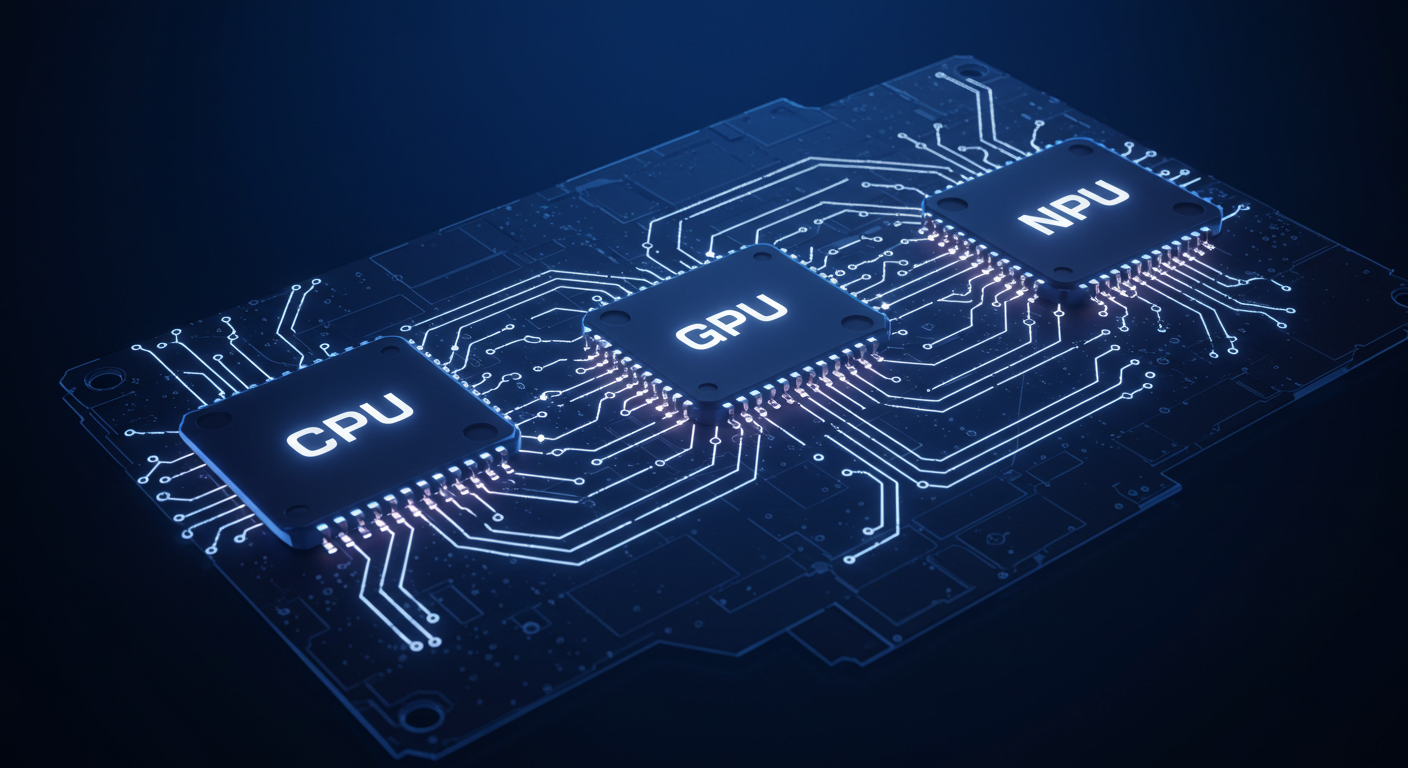For the last four decades, the architecture of the personal computer has been defined by two primary processors: the CPU (Central Processing Unit) as its logical brain, and the GPU (Graphics Processing Unit) as its visual powerhouse. That era is now officially ending. The AI revolution is forcing the most significant change to personal computing in a generation, with the introduction of a third, specialized pillar of processing: the NPU.
The Bottleneck: Why CPUs and GPUs Aren’t Enough
To understand why this shift is happening, you have to know what CPUs and GPUs are good at. CPUs excel at complex, sequential tasks—handling the core operations of your system one by one with incredible speed. GPUs are masters of parallelism, performing thousands of simpler, identical calculations simultaneously, which is perfect for rendering the millions of pixels in a video game.
While GPUs have been co-opted for AI training in data centers, they are incredibly power-hungry. For running sustained, efficient AI tasks on your local device—like a laptop—both CPUs and GPUs are simply too inefficient. Running a complex AI assistant on a traditional laptop would drain the battery and turn on the fans in minutes. A new solution was needed.
Enter the NPU (Neural Processing Unit)
The NPU is the hero of the new AI PC. It is a highly specialized processor designed to do one thing with breathtaking efficiency: run the specific types of calculations needed for artificial intelligence workloads.
Unlike a CPU or GPU, an NPU’s architecture is built to mimic the structure of a human brain’s neural network. This specialization means it can perform AI tasks like real-time translation, image recognition, or running a local AI assistant at a tiny fraction of the power consumption of a GPU. It delivers high performance without draining your battery or generating excess heat.
From Theory to Reality: The “Copilot+ PC”
This isn’t just theory; it’s happening right now. The first major mainstream push for this new type of hardware is Microsoft’s “Copilot+ PC” initiative. To earn this branding, a computer must have an NPU that meets a specific performance threshold (over 40 TOPS, or Trillions of Operations Per Second). This is the industry drawing a line in the sand: a modern “AI PC” is not just a fast PC; it’s a PC with a dedicated neural processor.
What This Means For You
What can an NPU-powered PC do that a traditional one can’t?
- Constant, On-Device AI: Run a powerful AI assistant locally without needing a cloud connection, making it faster and more private.
- Real-Time Enhancements: Perform tasks like real-time language translation and transcription during a video call, or blur your background with far greater accuracy and less battery drain.
- Advanced OS Features: Power next-generation operating system features like Microsoft’s “Recall,” which gives your PC a photographic memory of everything you’ve seen or done on it.
- All-Day Battery Life (Even with AI): Run AI-enhanced applications throughout the day without having to constantly search for a power outlet.
Conclusion: The New Heart of the Computer
The personal computer is undergoing its most significant evolution in decades. It is transforming from a general-purpose device into a specialized “AI Machine,” and the NPU is its new heart. The next computer you buy will almost certainly be defined not by its CPU clock speed or its GPU brand, but by the power and efficiency of its Neural Processing Unit.

